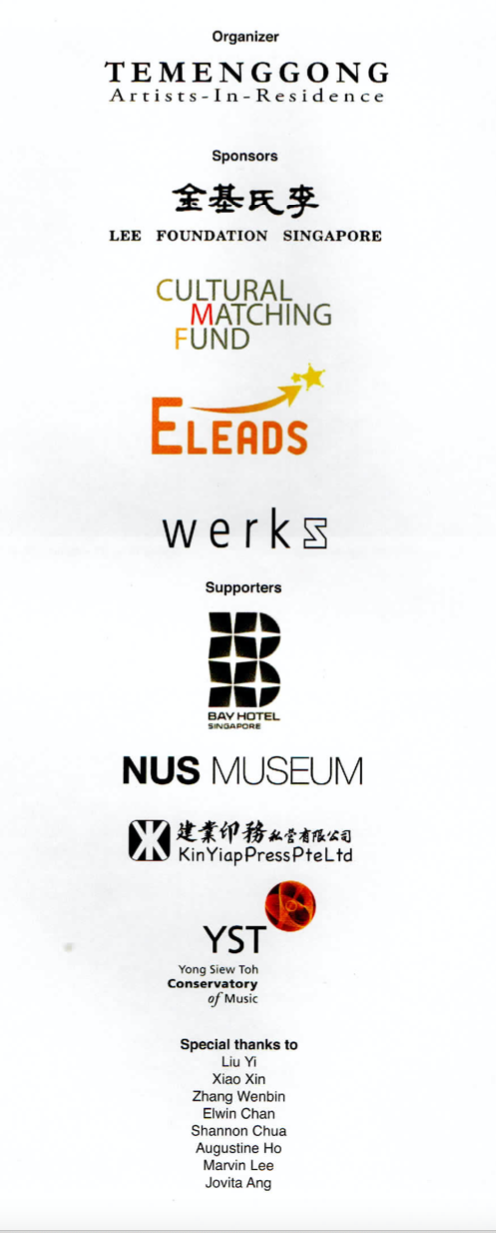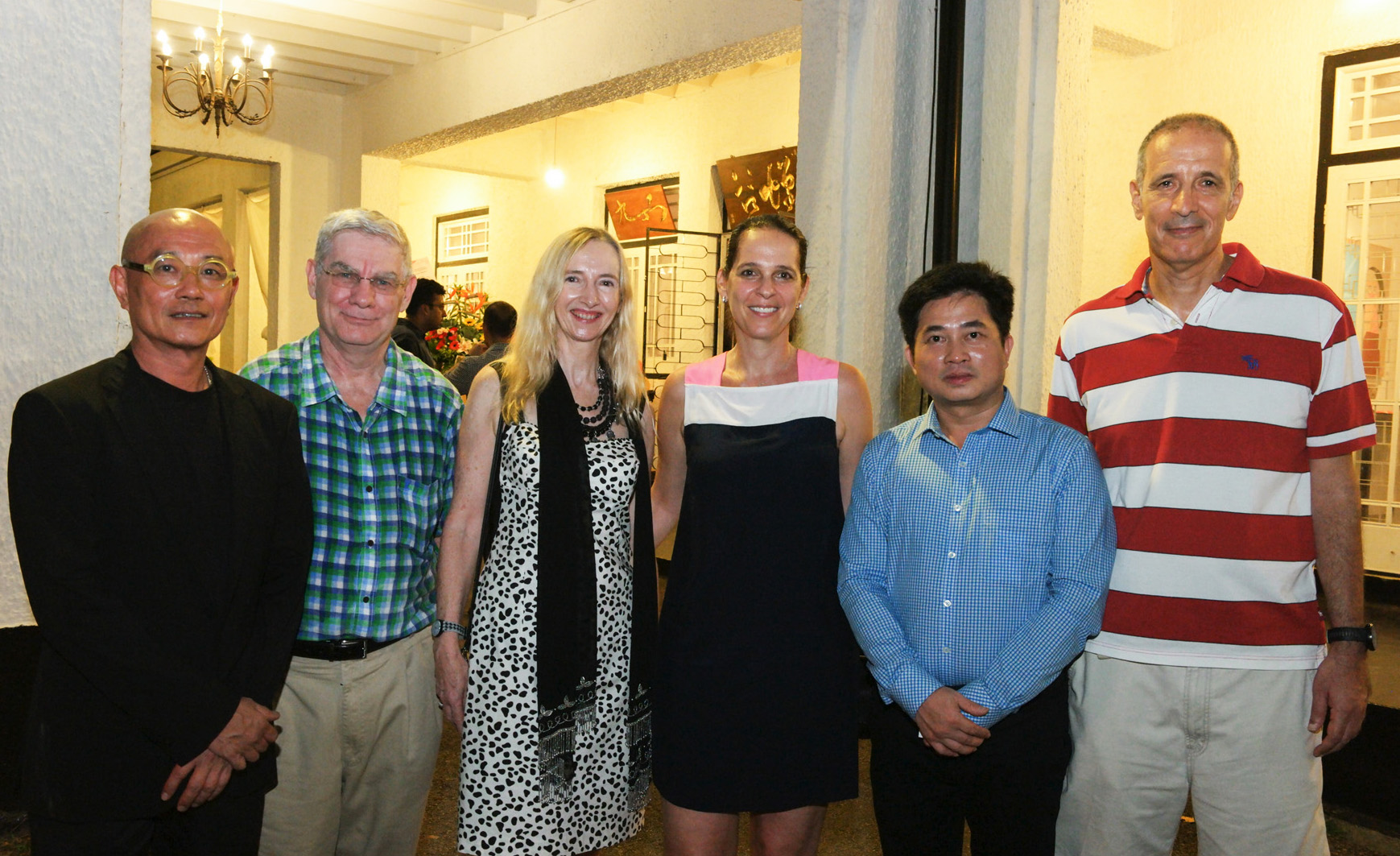Living Tropics
“People are always the main subjects in my paintings, even when they are not in the paintings. Their stories are told indirectly through those ‘objects’.”
The series of paintings presented in this exhibition, “Living Tropics”, imparts a sensitive glimpse into the heart of Dang Xuan Hoa’s works. “Tropics” was a word given by Hoa when asked to suggest a title for this series produced from his residency at Temenggong. Defined as a region surrounding the equator from the Tropic of Cancer in the Northern Hemisphere at 23°26′13.3″N and the Tropic of Capricorn in the Southern Hemisphere at 23°26′13.3″S, these boundaries encapsulate Hoa’s home in Vietnam, and Singapore, the lieu of his residency.
‘The Tropics’, or ‘Tropicality’, as Geographer Daniel Clayton and Linguist Gavin Bowd have suggested, “have been affixed to Western frameworks of meaning, desire and knowledgeable manipulation – a framework in which tropical peoples have been deemed to be unable to represent themselves and the Westerner observer/scholar decides on what counts as right, normal and true (and what does not).”
In the years of the emergence of contemporary art in the Doi Moi (Renovation, or Renewal) period in Vietnam , a similar ‘Western’ framework may also have been detected in discourses about the nature of Vietnamese contemporary art.
For Hoa, regardless of how the tropics are ‘read’, or where the world places Vietnamese art, the place for him and his art is in the Tropics. From the Vietnamese title for this exhibition, “nồng nàn” is a word that evokes the imagery of warmth, passion and intensity of the Tropics, and can be used to refer to both something environmental or to the intensity of human relationships. Reclaiming ‘tropicality’ for himself as a Vietnamese artist, Hoa asserts:
“The Tropics are filled with the resonance of the warmth of friendship, passion, human love and kindness. When you are born in a Southeast Asian Country, you will be influenced by the culture there, no doubt … You will see all the goodness in people through not only relationships, but also through the interactions between people and things around them. As a Vietnamese artist, I cannot escape that mould. Southeast Asian culture heavily influences me.”
Hoa is well-known for the portraits he paints. In Corner of the Artist and Pig Age, the self-portrait asserts the artist’s “living” identity: Vietnamese, culturally and by nationality. At the same time, the delicate and playful figures reminiscent of the forms of Henri and Reis (administrators of the Temenggong Residency), in Chicken Age and Go, extends the boundaries of this ‘living’ to the more southerly border of the Tropics where Temenggong is to be located, and invites the viewer to share in the intimacy of “the warmth of family and friendship”.
This ‘tropical living’ that Hoa sees in common between Vietnam and Singapore, is something he also finds in “the interaction of people and things around them.” In the English language, inanimate objects are termed ‘non-living things’; and ironically, what is in English termed the ‘still life’ genre, is called ‘nature morte’ in French. The objects of Hoa’s still life paintings (Spring Time; Summer Green), based on carefully arranged ceramics and pieces of furniture he encountered at Temenggong, are neither ‘non-living’, nor ‘morte (dead)’: they show “the existence of the ancients who created them, through the years they are still beautiful and intact, they are witnesses to history.” Objects are produced for human needs, but “things are changing fast these days in a more complicated way, and I feel we are becoming slaves of technology. I believe we can always benefit from things of the past.” The inspiration of the living quarters of Temenggong inspired Hoa to renew a theme that he acknowledges as having marked his breakthrough in his artistic career 30 years ago, in the painting of the Human Objects series. For this exhibition, the painting bearing the same title carries a message to the audience to see, and contemplate on the generations of life and history carried by the things set up around the compounds of Temenggong. “I think we live forever in that sense. That is why my artworks has the recurring theme of ‘eternal life’.”
Hoa’s practice is a continual engagement of the contemporary with tradition. It is imbued with a Vietnamese identity. Victor Tardieu might have proposed the creation of the Ecole des beaux-arts d’Indochine to impart fine arts training to the colony, to elevate an authentic artistic and artisanal production consistent with the culture of ‘Annam’ and ‘Cochinchina’; but it is the Vietnamese themselves who injected their cultural identity and visual legacies into their modern art, significantly so after the renaming of the institution as the Hanoi School of Fine Arts in 1957 (where Hoa had trained), after the removal of French colonial rule in 1954. Hoa readily acknowledges the influence of “ideas from traditional art, such as from the colours of Dong Ho wood block prints, and sculptures from Vietnamese pagodas (The Dance, The Angel).” Art, as Hoa sees it, does not have to be a trade-off of traditional values for something new or shocking. The continuity of the traditional in the contemporary is yet another way ‘life’ endures in art.
In his heavily colonialist geographical study in the Tropical band, Pierre Gourou, projected somewhat presciently, “Industrialisation, in which some people see the remedy or all our economic ills, would enable work to be given to the crowds who are unemployed owing to the disappearance of occupations, which a rise in the standard of living has made impracticable… Industrial methods perfected in temperate lands – and not in tropical countries – ought certainly to be introduced into the hot-wet belt.”
Work and employment now given to the post-colonial, post-industrial crowd in this ‘hot-wet belt’ of Southeast Asia, however, has created a post-modern society, in which “people are in a hurry, rushed, agitated, ambitious.” Hoa’s experience of Singapore outside the premises of Temenggong has been one of a “close to perfect city with a high-tech lifestyle, and a very stable economy under the direction of the government. However, as in a first world country, the pressure on its citizens are high.” Vietnam is also experiencing rapid development, and Hoa’s concern is that young Vietnamese will face the same challenges, and “some, but not all, would find true happiness in that life.” As an artist of a previous generation, Hoa feels keenly the gains and losses in the ‘developed world’, and through his works, Hoa wishes to transmit what he sees to those coming after: “I want to talk to the people of the society in which I live.”
Hoa’s paintings belie a sympathy to visual cues in the objects, spaces, and people around him. The Temenggong residency, with its lush green surroundings, provided Hoa a quiet and simple shelter for Hoa to work, and a chance to renew old friendships. In particular, Hoa is moved by the idea of artists giving back to the residency at Temenggong by supporting future artist-residents with a portion of the proceeds of sales from their exhibitions. For Hoa, Living Tropics is the happy result of this collaboration, and he is donating 50% of the proceeds of the exhibition to Temenggong, for future artists. In this way, may the cycle of the life of art and friendship continue in the warmth of the Tropics.
— Chang Yueh Siang
Curator, NUS Museum
















